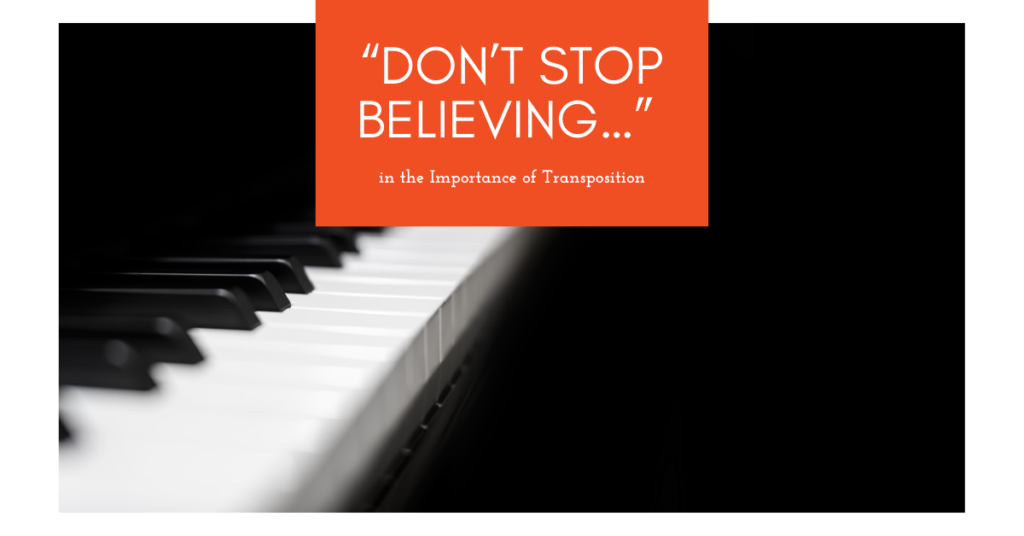Previously we discussed 3 tips for building rock piano chords and playing these chords in various ways. Learning all 12 major and minor triads, inversions, and being able to double certain notes are critical first steps in playing rock piano chords. But once you’ve got that down, check out three more tips we have in store for you below. This article will show you how to build dominant 7th chords, inversions, and will explain how to interpret slash chords.
Rock Piano Chords Tip #4: Build Dominant 7th Chords
Dominant 7th chords are a staple in jazz playing, but they are also very common in rock music, so you’ll want to master them and add them to your rock piano chords database. Being able to build dominant 7th chords one at a time in all 12 keys is the first step, of course. So we’ll again look at the formula for constructing dominant 7th chords.
The first 3 notes of a dominant 7th chord are simply a major triad.
To that major triad we are going to add a minor 7th, and that’s all there is to constructing dominant 7th chords.
Rock Piano Chords Tip #5: Dominant 7th Chord Inversions
Once you’ve learned all of the dominant 7th chords in root position you should then begin practicing the dominant 7th chords in the various inversions. As we’ve already seen with major and minor triads, we can play chord in root position, 1st inversion, and 2nd inversion. But because dominant 7th chords have four notes in the chord (root, 3rd, 5th, and 7th) there is another inversion that you should be sure to practice – a 3rd inversion that has the 7th as the lowest note in the chord.
Rock Piano Chords Tip #6: Slash Chords
Slash chords are commonly encountered in playing and reading rock music. Many students are a bit confused when it comes to playing slash chords but it’s actually quite easy. Slash chords are sort of like music fractions – we have a top number (chord to the left of the slash) and bottom number (note to the right of the slash).
The first few measures of Billie Joel’s “Piano Man” are filled with slash chords.
So what’s really going on in these slash chords? How do we interpret them correctly?
The chord is broken up into 2 parts: the chord to the left of the slash, and the note to the right of the slash. The chord to the left of the slash is the chord that you will play with your right hand. The note to the right of the slash is the note that you will play in the bass with your left hand. So a slash chord, such as the one in measure 2 above, says “play a G major triad but instead of a ‘G’ in the bass, play a ‘B’ in the bass.” If you play in a band, this information is helpful to the bass player as well, as he or she would play the note to the right of the slash as opposed to the root of the chord.





